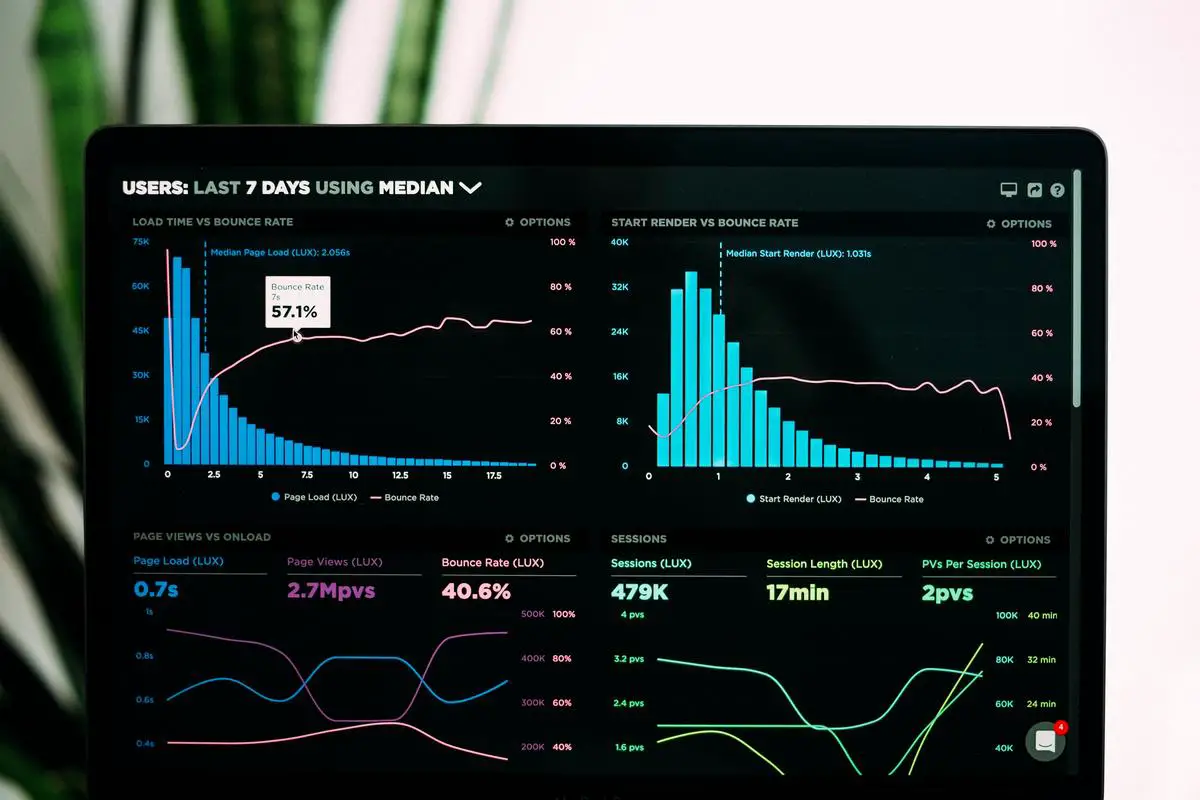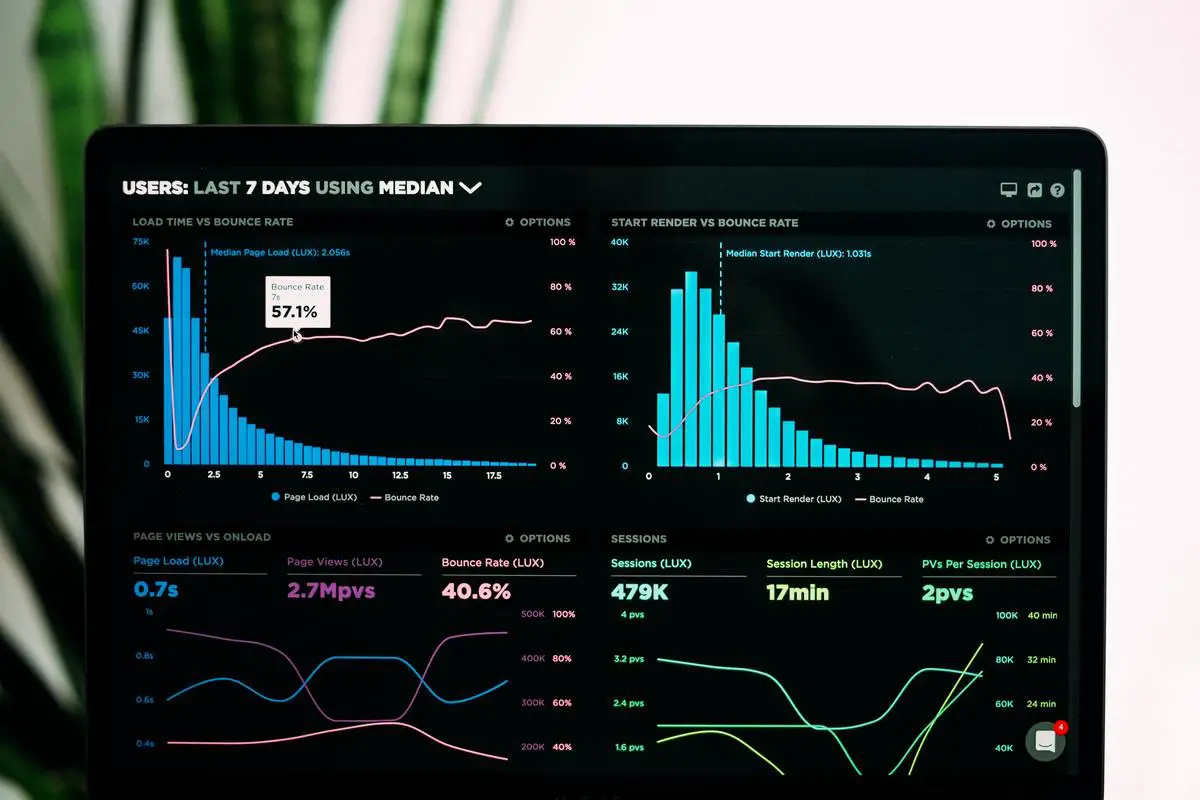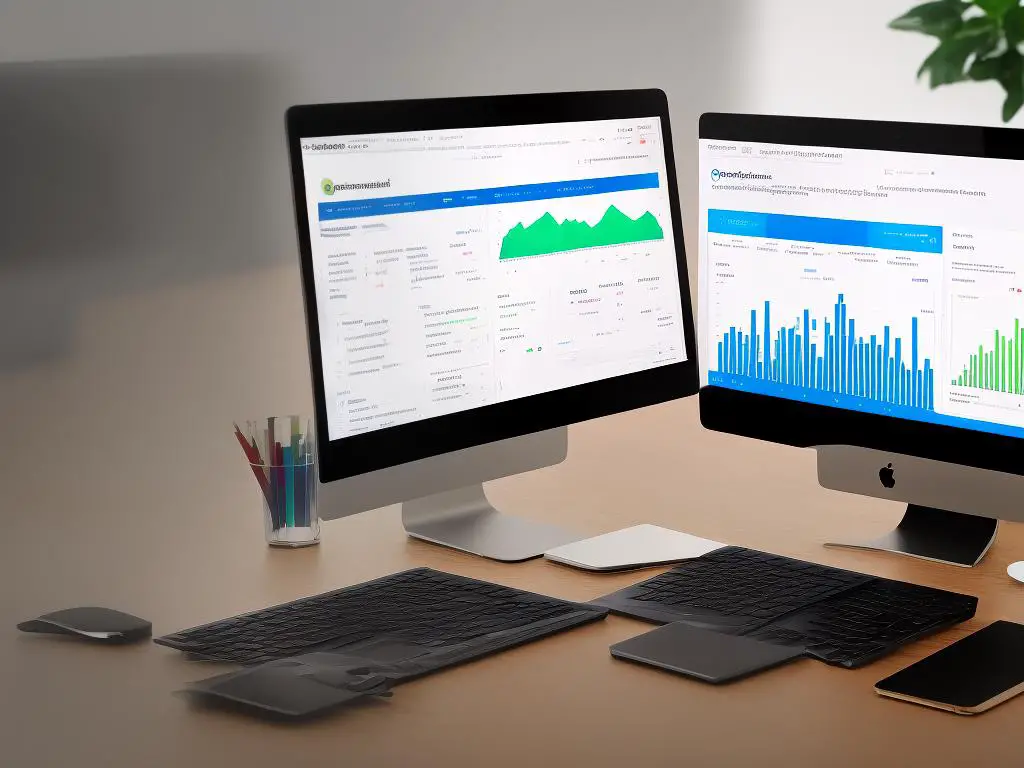In an era dominated by digitalization, success in business is greatly dependent on the adept understanding and leveraging of data analytics. A tool at the forefront of such analytics is Google Analytics 4 (GA4), a highly robust and evolving platform that transcends traditional data analysis. This piece will equip you with the understanding and depth of knowledge about GA4, specifically focusing on user acquisition. Exploring the essential elements, interpreting reports, strategies for optimization, and providing insights from real-world examples and case studies; our journey dives into how GA4 reveals not just where your users are coming from, but also provides a guide on how to build efficient strategies for sustained business growth.
Understanding GA4
Understanding GA4: A new paradigm for data collection and analysis
Google Analytics 4 (GA4) represents the latest generation of Google’s analytical tools designed to help businesses understand customer behavior and preferences. It is a significant update from the previous version, Universal Analytics, bringing to power a more robust, AI-driven insights, cross-device tracking capabilities, and privacy-centric design.
The Purpose of GA4
GA4 is designed to facilitate a more comprehensive understanding of how users interact with your business across different devices and platforms. The tool collects and organizes user-based, event-driven data, providing real-time and predictive insights that can help inform business decisions. This includes its robust capability to track user acquisition, enabling businesses to effectively analyze where their users are coming from.
GA4’s Functionality: User Acquisition
One vital feature of GA4 is tracking User Acquisition, which involves recording where a business’s users or customers are sourced from. This can include direct visits, social media referrals, organic search, paid search, and other traffic sources. GA4 provides detailed reports on the source, medium, and campaign that brought users to your site. With GA4, businesses can comprehensively understand their user acquisition strategies, streamline their efforts, and thus increase return on investment.
GA4 in a Business Setting
Deploying GA4 in a business environment can provide significant benefits. It can aid businesses in establishing effective marketing strategies by identifying the acquisition channel that yields the most user engagement and quality traffic. Besides, the advanced features of GA4 offer deeper insights into the customer journey, from acquisition to conversion and retention. Furthermore, predictive metrics help anticipate future customer actions and churn possibilities, allowing businesses to proactively adjust their strategies.
The Evolution of GA4 and its Differences from Universal Analytics
GA4 has evolved significantly from its predecessor, Universal Analytics. Unlike Universal Analytics, which focuses on sessions, GA4 concentrates on events or users’ interactions with a website or app. Additionally, unlike Universal Analytics, which can only track users on a single device or platform, GA4 can track users across different devices and platforms, providing a comprehensive view of the user’s journey.
While Universal Analytics uses cookies to track user data, GA4 adopts a more privacy-centric approach, relying on machine learning to fill in gaps where user data may be incomplete, either due to users opting out of data collection or due to the blocking of cookies.
In Summary
Google Analytics 4, also known as GA4, portrays a considerable improvement upon the old-fashioned Universal Analytics. GA4 is specifically designed to focus more on user-oriented and event-triggered data collection, advanced cross-platform tracking facilities, and a newly evolved privacy-conscious model. These sophisticated features provide businesses with an effective means of tracking user acquisition. Furthermore, the extensive detail GA4 provides about user behavior and the highly specific user acquisition data contribute to making it an exceptional tool for businesses aiming to refine their marketing tactics.

Photo by lukechesser on Unsplash
Elements of User Acquisition in GA4
Exploring User Acquisition within GA4
The term ‘User Acquisition’ refers to the measures undertaken to attract a larger audience or clientele for a designated platform, product, or service. When referring to GA4, user acquisition methods encapsulates gathering and analyzing information related to the way users discover and interact with your website or app. This data plays a crucial role in developing effective strategies to expand your user base.
Definition of Key Terms: New Users, Returning Users, Engagement Rate
To fully grasp user acquisition in GA4, understanding key terms is important.
- New Users: These are individuals who visit your website or use your app for the first time within the selected date range in GA4. They play a critical role in determining how well your acquisition strategy is working.
- Returning Users: These are individuals who revisit your website or app after their initial visit within a specified period. High returning users signals strong user engagement or high user satisfaction.
- Engagement Rate: This term refers to the percentage of users who engage with your website or app. It is calculated by dividing the number of engagements by the number of sessions. Higher engagement rate signifies more interactions and involvement with your product or service.
Navigating GA4 to Discover User Acquisition Metrics
Finding user acquisition metrics in GA4 can be done by following these steps:
- From your GA4 home page, click “Acquisition” in the left-hand menu.
- Click “User Acquisition” to see a breakdown of the top ways users discover your property, and how those users subsequently behave.
- To view more in-depth data, click on a specific channel. You’ll then see data for ‘New Users,’ ‘Returning Users,’ and ‘Engagement Rate,’ among others.
Refining Your User Acquisition Strategies
To gain a thorough understanding of how well your user acquisition strategy is performing, consider pursuing this approach:
- Gaining New Users: If increasing your user base is a priority, strategies that should prove effective include content marketing, SEO improvement, and focused ad campaigns. Success in this area is indicated by a consistent increase in new users.
- Retaining Existing Users: If your aim is to retain users, success in this field would be shown by an increase in returning users. To achieve this, you might consider utilizing tactics such as personalized content, user-friendly interfaces, and implementing a user reward system.
- Boosting User Engagement: Tactics like revising your user interface, updating your content, or enhancing the overall user experience could help if your user engagement rate seems a bit lacking. To determine what improvements are needed, you could consider A/B testing different elements of your website.
User acquisition is not merely a nonrecurring effort but a continuous operation that requires consistent monitoring and ongoing adjustment. Ensuring your strategic approach is in line with your brand goals is fundamental to long-term success. Leveraging GA4 can provide the critical insights needed to fine-tune your approach.

Photo by lukechesser on Unsplash
Interpreting User Acquisition Reports in GA4
Navigating User Acquisition with GA4
Google Analytics 4 (GA4) is an innovative tool specifically designed to assist businesses in understanding user behaviors and online interactions. A standout feature of GA4 is its user acquisition reports, which provide comprehensive insights into the sources of website traffic and how these visitors interact with your website once they arrive.
Accessing User Acquisition Reports
To access user acquisition reports in GA4, navigate to the ‘Acquisition’ tab in the Google Analytics dashboard. Here, one can find several detailed reports on different aspects of user acquisition. Clicking on the ‘User Acquisition’ report in this tab will showcase traffic source, device type, and geographic location of users visiting the site.
Reading User Acquisition Reports
The User Acquisition report in GA4 offers data divided into three main areas:
- Traffic Source: This indicates where users originated from before visiting the site. The sources can be ‘Direct’, ‘Social’, ‘Email’ and ‘Referrals’, among others.
- Device Type: This refers to the device which users used to access your site. Devices could be Desktops, Mobile phones, or Tablets.
- Geographic Location: This reveals the location of the users accessing the websites. You can view data divided by country, city, or region.
Interpreting User Acquisition Reports
Interpreting user acquisition reports correctly can help you understand which marketing channels are most effective for your business.
- Traffic Source: A high number of ‘Direct’ traffic indicates that your branding is strong and many users are coming to your site by typing your URL directly into their browser. If ‘Email’ is a significant traffic source, your Email marketing strategies are working effectively. High ‘Social’ traffic shows effective social media marketing, and ‘Referrals’ suggest that your link-building efforts are paying off.
- Device Type: A higher number of visits from mobile devices indicates that mobile users form a significant part of your target audience, thus, your site should be optimized for mobile viewing.
- Geographic Location: If the majority of your traffic is from a specific location, you might consider personalizing experiences based on that locale.
Driving Strategic Business Decisions
In the fast-paced digital world, understanding user behavior is essential for any business. One tool that provides incredible insights into this is the user acquisition reports in GA4. It not only showcases user activity but also delivers key data that can drive strategic business decisions. Information about top-performing channels, device types used and users’ geographic location are all readily available. Utilizing these data points, companies can develop tailored marketing efforts and user experience that lead to higher conversion rates. As a result, GA4 user acquisition reports are pivotal in refining marketing strategies and enhancing digital footprint.

Optimizing User Acquisition Strategies with GA4
An Introduction to GA4 and User Acquisition
Google Analytics 4, popularly known as GA4, is the latest iteration of Google’s best-in-class web analytics service. It has quickly become indispensable for businesses worldwide who want to boost their online visibility and fine-tune marketing strategies.
As the phrase suggests, user acquisition is the process of obtaining new users for your products or services. For companies with an online presence, this translates to drawing in visitors, converting them into customers, and fostering their loyalty. Given how central this is to the business’s success, understanding GA4 and utilizing its user acquisition reports can offer a game-changing advantage.
Importance of GA4 in User Acquisition
GA4 helps digital marketers understand user behavior and use this data to improve marketing campaigns. It offers insights into a user’s journey—from their first interaction with your brand (acquisition) to converting into a customer (conversion) and even beyond.
GA4 can identify the strengths and weaknesses of your online strategies by tracking key indicators such as user engagement levels, conversion rates, and user retention. This information can prove crucial in optimizing your digital strategies to enhance user acquisition.
Refining Marketing Campaigns with GA4
With GA4, you can track the performance of all your marketing channels. It can show you which channel is most effective in attracting new users, thereby offering valuable insights which can be used to streamline your marketing strategies and allocate budgets judiciously.
GA4 provides deep-level insights into which ads are performing well and which are not, helping you refine your ad campaigns. Audience segmentation, for instance, can be used to target unique groups based on their online behavior, demographics, or interests.
GA4’s Role in SEO
Using GA4, you can identify which keywords are driving the most traffic to your site. This can help with search engine optimization (SEO), allowing you to craft content accordingly to improve user acquisition.
GA4 also offers information on organic search, which is useful for SEO planning. It shows how users find your website—whether through a direct search, social media, or referral sites—and this can guide your SEO efforts.
Enhancing User Engagement with GA4
GA4 provides insights on user engagement metrics such as bounce rate, session duration, and pages per session. These can guide you in enhancing your site’s user experience, potentially leading to a rise in user acquisition.
With GA4’s behavioral reporting, you can determine how users interact with your site, helping you improve aspects of your website that might be hampering user engagement.
Leveraging GA4’s Predictive Analytics
GA4’s predictive analytics employ machine learning to foresee user behavior, which can be highly advantageous in strategizing future marketing efforts.
You can leverage these analytics to predict which users are likely to convert in the future or those at risk of churning. Hence, you can preemptively respond by refining your approach to these target groups to increase user acquisition.
Final Thoughts
From the perspective of user acquisition, GA4 is a game-changer for businesses. The platform’s ability to provide detailed insights drawn from data enables the creation of more targeted and impactful marketing campaigns. It also enhances SEO initiatives and user engagement. Furthermore, GA4 goes a step further by offering predictive analytics, giving businesses a peek into potential future trends, thereby enabling proactive and informed decision-making.

Real-World Examples and Case Studies on GA4 User Acquisition
Practical Application: Enhancing Attribution Analysis using GA4 in a Top-Tier eCommerce Company
The value of GA4 for user acquisition becomes readily apparent when looking at its application in a leading eCommerce company. The company discovered that they were struggling to hold their marketing efforts accountable, particularly when trying to identify the origin of their most valuable customers. They found it challenging to effectively monitor the performance of their marketing campaigns on their site.
After implementing GA4, the company experienced a significant transformation. The platform’s advanced AI capabilities let the company comprehensively monitor each customer’s journey on their websites. This showed their marketing team which channels were most successful for user acquisition. The gathered data became instrumental in decision-making, allowing the company to strategically redirect their marketing budget towards the channels that added the most to their user growth.
Case Study: Leveraging GA4 for User Acquisition at a Digital Marketing Agency
Another case study that sheds light on GA4’s efficacy in user acquisition involves a renowned digital marketing agency. Prior to adopting GA4, the agency had struggled to acquire and keep users due to analytics discrepancies and a lack of precise marketing tools.
The agency chose to implement GA4 into their analytics strategy due to its advanced features and navigable interface. The GA4 system allowed them to scrutinize user behavior with more granularity. Through GA4, they had access to data on user engagement and demographic report, assisting them in the effective allocation of their resources.
The implementation of GA4 not only simplified their analytics but also enhanced their ability to acquire and engage users. The agency saw a substantial increase in user acquisition, much of which they attributed to the valuable insights gained from GA4.
Benefits of GA4 User Acquisition
From the highlighted real-world examples and case studies, it is evident that GA4 can have a significant impact on user acquisition. By understanding and using GA4, businesses can track buyer interactions more accurately, allocate marketing resources more competently, and ultimately foster robust business growth.
In sum, the advanced features of GA4 can help any business, regardless of its industry or size, to enhance its user acquisition and elevate its overall performance. These real-world examples and case studies offer a window into the potential of GA4 in achieving successful user acquisition.

Following the roadmap provided, the exploration and understanding of GA4 and its impact on user acquisition becomes palpable. Strategizing marketing campaigns, optimizing SEO, improving user engagement, leveraging predictive analytics, all becomes feasible with this powerful tool. Through real-world examples and case studies, we’ve seen proven methods and results that underscore the effectiveness of GA4 in driving user acquisition and business growth. Applying this knowledge, you can harness the full potential of GA4 and steer your business towards a future of growth and success, powered by informed and data-driven decisions.

